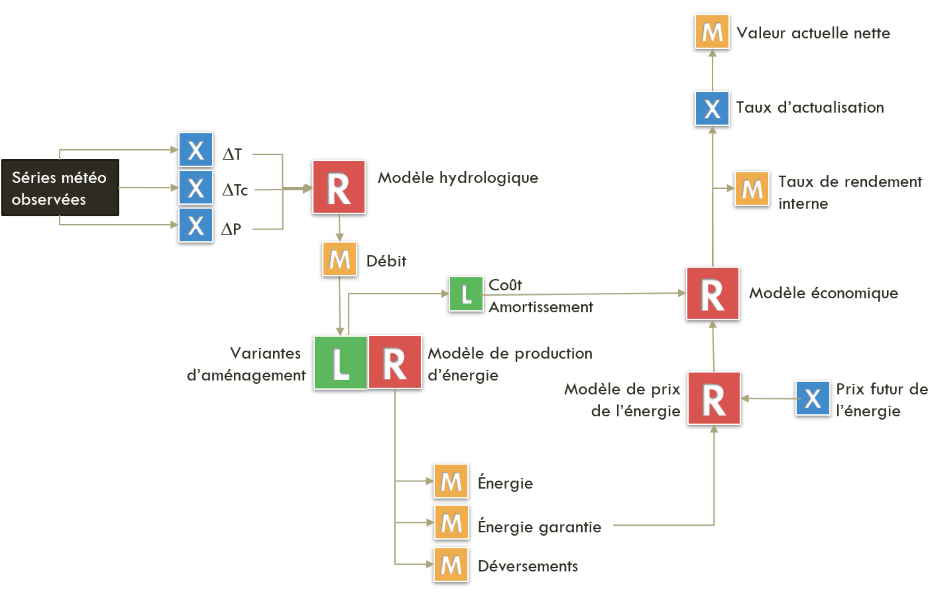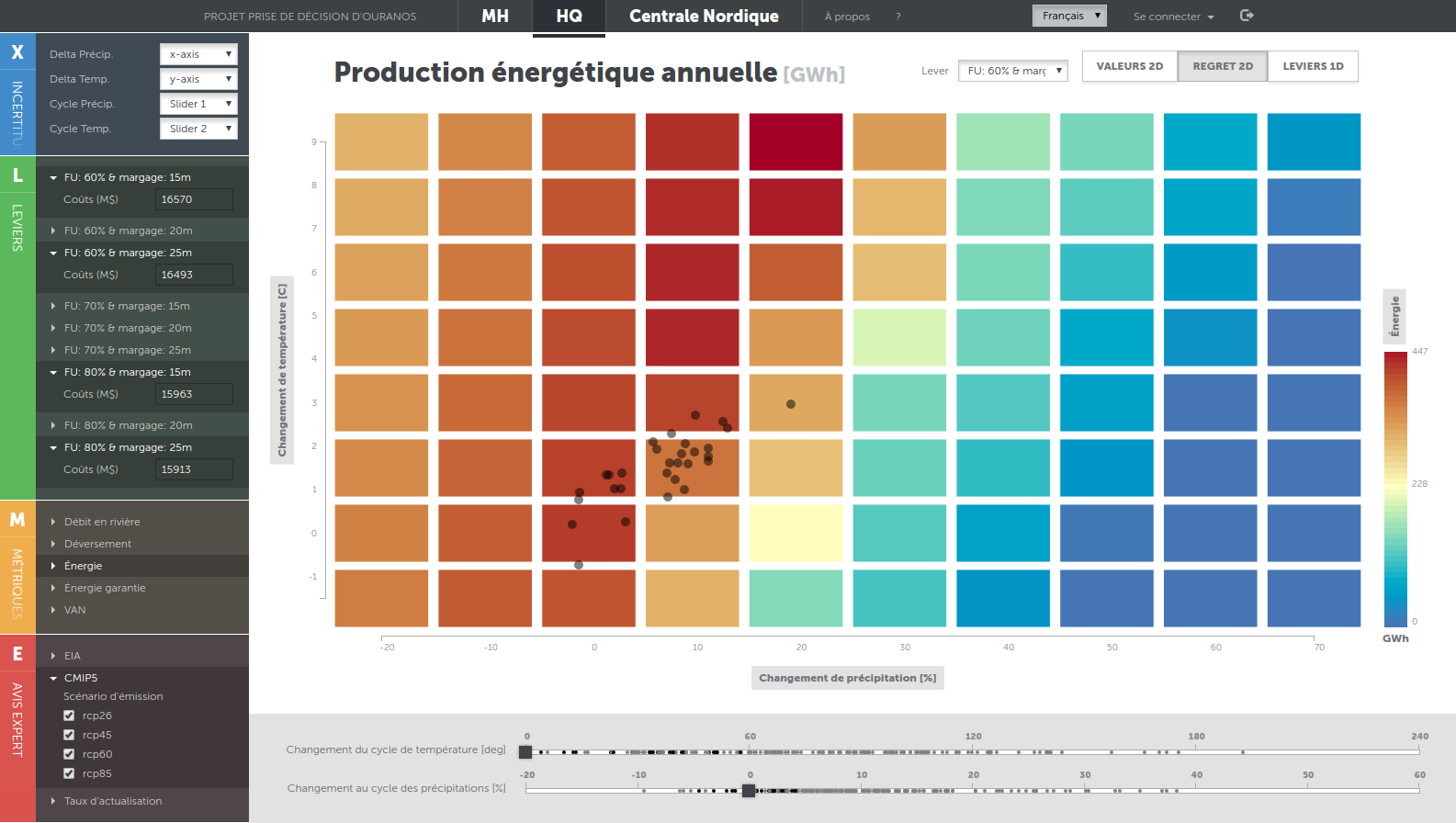Test bed for a decision making protocol in the hydroelectric sector
Managers now have access to an interactive tool enabling them to better understand the issues and to integrate climate information in their decision-making process.
Project details
Principal(s) investigator(s)


Context
Major infrastructure projects in the hydroelectric sector are planned decades in advance and their return on investment calculated over periods of up to 100 years. Due to this long horizon and the strong dependence of hydroelectric production on climate conditions, these projects are particularly sensitive to climate projection uncertainties. An increase or decrease in water inflow can cause installed equipment to deviate from its optimal mode of operation.
However, despite their availability, climate projections do not always enter into the planning and design process of hydroelectric sector projects. One hypothesis explaining this is that traditional impact studies do not adequately meet decision-making requirements.
This project seeks to explore and test approaches that allow better integration of climate information in the decision-making process for hydroelectric investments.
Objective(s)
-
Design a decision-making tool for two hypothetical investment projects in the hydroelectric sector;
-
Develop expertise in terms of decision-making approaches in the context of climate change;
-
Support adaptation to climate change by proposing climate services that meet decision-making requirements.
Methodology
-
Explore decision-making methodologies that are robust to climate projection uncertainties;
-
Identify the main issues affecting the performance of hypothetical investments at Hydro-Québec and Manitoba Hydro;
-
Simulate the performance of various hydroelectric development options based on identified climate and economic uncertainties;
-
Develop a decision-aiding tool for each case study, as well as a "general public" version for demonstration purposes.
Results
The literature on the integration of climate information in decision-making points to certain flaws of top-down impact studies. In these studies, a series of climate models apply two or three greenhouse gas (GHG) emissions scenarios in order to estimate, via an impact model, the consequences of climate change.
The conclusions of these studies are directly dependent on the assumptions made in the chain of analysis: choice of GHG scenarios, models, processing methods, etc. As such, it is relatively easy to contest or dismiss the results, as rejecting one single link in the chain of hypotheses discredits the study’s conclusions.
Furthermore, these scenarios are conservative in the sense that they describe climates for the most likely climate sensitivity values, and generally do not cover climates that are possible but less probable, which may for example have a low or high sensitivity to GHG.
These reasons justify the use of bottom-up methods specifically designed to support decision-making. The method chosen for this project, the robust decision-making approach, could be described as a sensitivity study exploring climatic, economic and other variables by means of thousands of synthetic scenarios covering a wide range of possible futures.
This approach involves the use of the XLRM framework, where X are exogenous uncertainties, L are policy levers available to the decision-maker (actions, strategies), R are the relationships or models linking performance to the uncertainties and levers, and M are performance metrics used to evaluate how well the objectives have been met.

The measures of performance for each lever are computed over the range of values for the selected uncertain variables, generating a large data set that can help answer a number of questions: Which strategy performs best in a particular future? In which futures is a particular strategy optimal? What source of uncertainty dominates a lever’s performance? Which lever minimizes regret if the future resembles that projected by the models?
In collaboration with Hydro-Québec and Manitoba Hydro, Ouranos applied this robust decision-making approach to two fictitious situations. The Hydro-Québec case study considered two design criteria, drawdown and design flow, for a new northern power station. The Manitoba Hydro case study looked at upgrading turbines in an existing power station.
In both cases, thousands of hydrological and energy production simulations were performed, and then visualized using the web application developed under the project. While this approach has the advantage of offering decision-makers the benefits of a detailed sensitivity analysis, the time and effort required for carrying out all these simulations are considerably greater than for a standard impact study.
The decision-making approach is therefore not a panacea, but a new type of climate service offered by Ouranos to support decision-makers in cases where uncertainties play a decisive role in the analysis process.

Benefits for adaptation
Benefits for adaptation
Managers now have access to an interactive tool enabling them to better understand the issues and to integrate climate information in their decision-making process.
Scientific publications
Funding


Other participants
-
Hydro-Québec
-
Manitoba Hydro